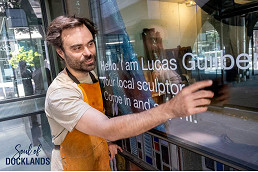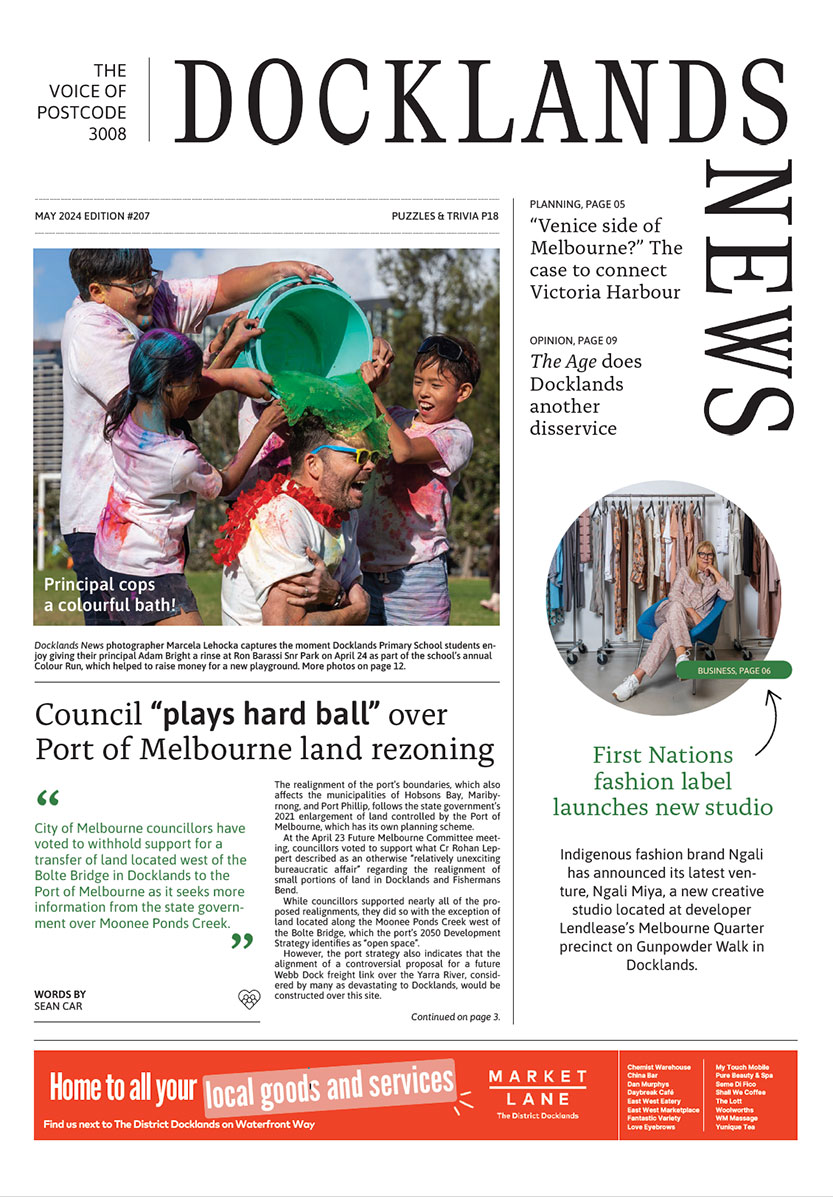Smoke on the Yarra
The hazardous working conditions of labourers at the docks and wharves in Melbourne made their lives perilous. One of the dangers they faced was the risk of fires, which could easily ignite if flammable materials came into contact with stray sparks or flames.
This grainy image depicts the fire that took place on Queen’s Bridge and was published in The Herald newspaper in 1951.
Various fires have been recorded either at the docks or wharves on either side of the Yarra for more than a century. On February 6, 1951, smoke filled the area of Queens Wharf between Spencer Bridge and Queens Bridge, with the Yarra River serving as a backdrop. While the cause of the inferno appears to be unknown, it was first reported around 5am.
One of the first to spot the fire was train driver L. G. Forbes, who was taking the Broadmeadows train across Queen Bridge when he reported, “there was a terrific burst of dense black smoke. The train was moving slowly. In less than 30 seconds you couldn’t see a thing.” (The Herald, February 6).
The fire brigade arrived at 5.30 am but faced an unexpected challenge when the fire reached a petrol tank, causing a destructive explosion. Henry Pierce, an employee of the Fish Market located near Spencer Street Bridge, witnessed the powerful blast that shattered nearby windows and sent debris flying. He reported it in The Age on February 7.
At daybreak, numerous civilians in Melbourne witnessed the bravery of the firemen who fought the flames despite several oxy-acetylene cylinders exploding and causing the riverside of the sheds to plummet into the Yarra. The smoke was visible from as far away as Ferntree Gully, and even later that evening, firefighters were still extinguishing smaller fires. Despite the intensity of the blaze, there were no reported fatalities.
The fire caused damage worth more than £200,000, destroying around 200 yards of shipping buildings belonging to 13 carriers and shipping-related businesses. The damages included more than 60 trucks and vehicles, cranes, and thousands of pounds worth of cargo.
The fire also resulted in several boats catching fire, including The Royal, a £2000 launch, which was later hauled away by the Harbour Trust and sunk in the harbour.
Following the fire, the Melbourne City Council received various proposals and suggestions for the future of the area, including gardens, a car park, and a bus terminal. Eventually, the council chose to build a car park, which was completed by July 1953, and could accommodate 200 cars.
It wouldn’t be for another 30 years until Batman Park was finally opened near the fire site in 1982, and until 2002 it housed Ron Robertson-Swann’s infamous Vault sculpture. •

Meet Lucas Guilbert




 Download the Latest Edition
Download the Latest Edition
